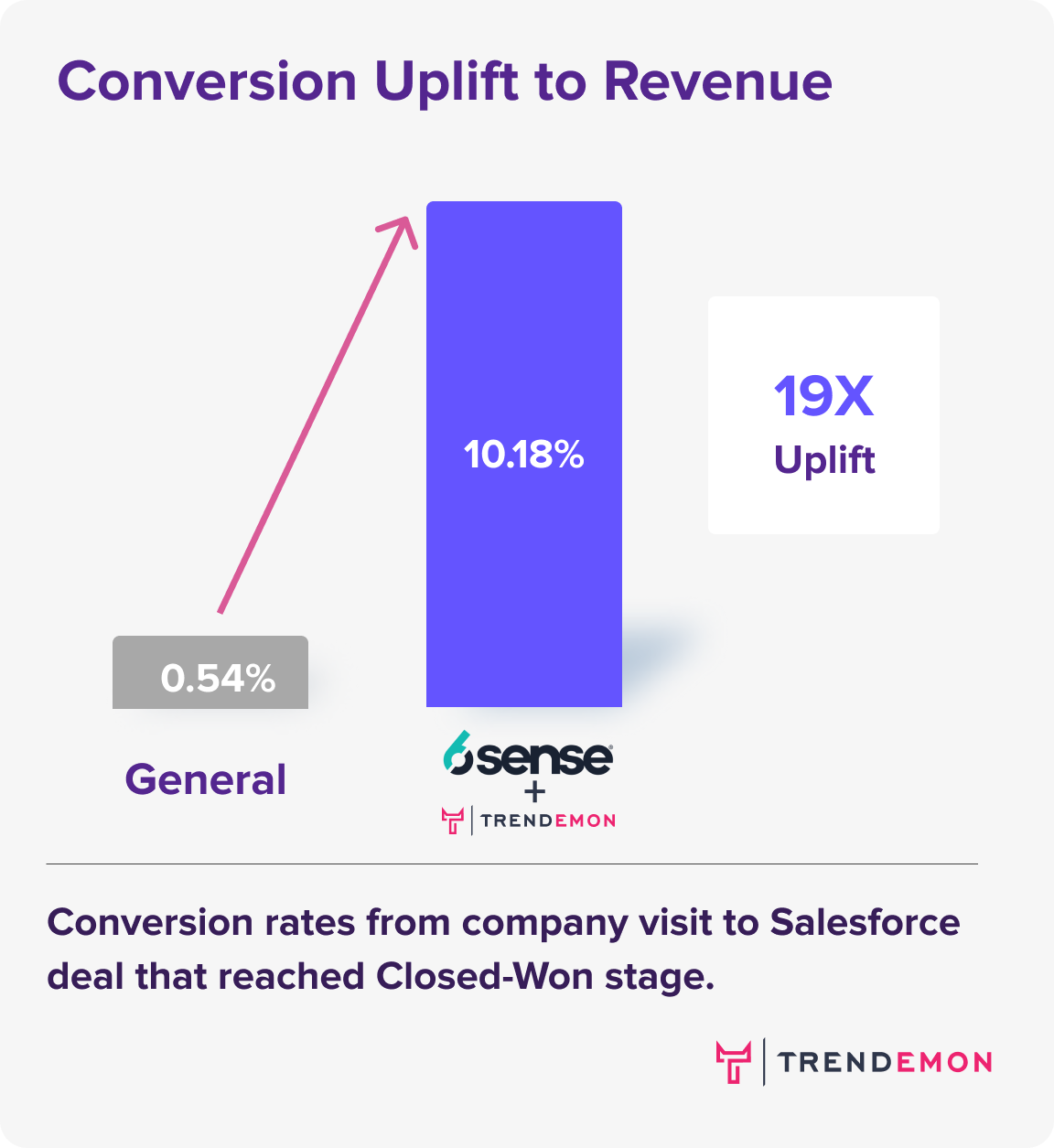How Conversion Rates of 6sense Audiences Compare with Other Segments?

Introduction
Earlier this year we officially kicked off our partnership with 6sense. Now, armed with half a year’s worth of data, we delve deep into how this partnership has translated into quantifiable results. Specifically, we assessed the conversion of custom audiences based on 6sense segments into successful deals in comparison to other audience subsets.
Methodology
Before diving into results, let’s understand our evaluation framework:
- Identification and Mapping: Through Trendemon’s 6signal integration (a reverse IP company lookup API by 6sense), we recognize companies visiting the website and map their journeys.
- Connecting to Deals: Our Salesforce integration bridges the gap between website visits and progressing deals. This, in essence, chalks out a conversion pathway from a mere site visit to a Salesforce deal, at its various stages.
- Comparative Analysis: The primary focus is on 6sense website audiences (aka Trendemon audiences derived from 6sense segments). Their performance is benchmarked against two other segments: General visitors and paid traffic. Conversion uplift is calculated by comparing conversion rates of these distinct segments within a consistent timeframe.
Key Findings
The results were both illuminating and impressive:
- 6sense audiences, enhanced by Trendemon, showcased a whopping 13X conversion rate to any deal stage over their generic, non-optimized counterparts. The figures were even more staggering when zeroing in on closed-won deals – a 19X boost!
- Audiences via paid traffic weren’t left too far behind either. They demonstrated a 6X uplift to any deal stage and a 10X surge when it came to closed-won deals.
Such figures are a testament to the power of precision targeting via intent signals combined with personalized, real-time website activation. In a time where ROI reigns supreme, evidencing tangible returns down to the revenue level becomes essential.
Why Do 6sense Audiences Optimized by Trendemon Excel?
Gartner’s research found that 67% of a buying group’s time is dedicated to independent research and internal discussion. Through our own data, we have witnessed in 2023, a staggering 90% of these buyer journeys remain anonymous, with the typical buying group comprising 7-13 distinct members, each visiting vendor sites at least once.
What these stats underscore is that in order to outperform the competition, several mechanisms need to operate in sync:
- Precise intent recognition – correctly identifying accounts that are “in the market”.
- Tailored content catering to diverse buying journeys and personas.
- Real-time responsiveness on the website to ensure the delivery of apt content to the right stakeholder.
When Precision Intent Meets Precision Activation
The synergistic operation of these elements? That’s where we witness conversion magic – a almost 20-fold enhancement in closed-won conversion rates. Intrigued about how to seamlessly steer buying groups’ online journeys? Reach out to our team for a comprehensive demo with real-world use cases – Request a demo.